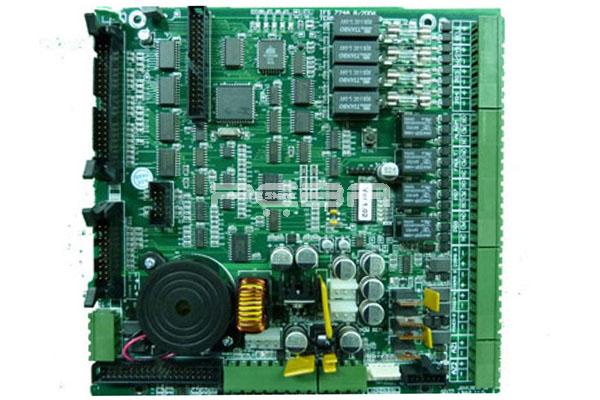General, quoting & support.
Add: Building E, No.58, Nanchang Road, Xixiang , Baoan District Shenzhen City, Guangdong, China
Tel : 0755-27348887
Fax : 0755-27349876
E-mail : svc@pcbastore.com
Fire Alarm Mainboard PCBA
Simon / 2021-05-08
Contents [hide]
Fire alarm circuits are simple circuits tailored to detect smoke and fire. Their working mechanism is quite simple. These circuits operate by detecting smoke or signs of fire in real-time and they immediately alert you with sirens or buzzers. It goes without mention that these circuits are a vital security tool and almost every public and private building has them. Common applications include commercial office complexes, theatres, cinema halls, malls, and every other moderate to large public spot.

As of now, you will find several unique and classy alarm circuits, operating as an independent device. However, you can also design them through common and easily available components like diodes, thermometers, and the likes.
In the following sections, we will learn more about these circuits while also shedding light on Fire alarm PCB assembly and circuit components.
What Is Fire Alarm Circuit?
As previously discussed, a fire alarm circuit is a tool or a device that alerts you during instances of smoke or fire. These circuits detect potential accidents in real-time and alert you against the same. They are efficient, useful, and extremely easy to build. In the following few sections, we will discuss more about that.
Components of A Simple Fire Alarm Circuit Using Thermistor
Whether you want to build your own fire alarm project or are simply curious, it is worth understanding the different components of simple circuits. This helps you with clear insight, even before you start the project. Typically, you will need a thermistor and a transistor or similar other equipment to build a basic circuit. Other items required would be a device for temperature control, batteries, and a soldering kit.
5 Simple Steps to Build a Fire Alarm Project
You can easily build your fire alarm project using a thermistor for temperature detection. Here's everything you need to do.
Estimate a Block Diagram
The first thing you need to do is come up with a block diagram. Make your estimations depending on the project requirement. Ideally, your diagram will include the following components:
A thermistor
A battery
A temperature indicator
And a Transistor
Source the Components
Once you're done with the diagram, it's now time to find the different components needed to design these circuits. You can buy these components from any electrical store. There, you will likely need to choose individual components instead of a project or a DIY kit. With individual components, you get to build the device from scratch. Source the components based on the block diagram. You will typically need the same things.
Connect the Components
You will now need to connect the wires of your component to design the fire alarm circuit. In most cases, you can easily use breadboards (ideally solderless) for connecting your components. You can also use these same components to design other types of circuits. Alternatively, you can also enhance the existing circuit by adding a few other parts.
Connect the Soldering Wires and Circuit
You can now test the circuit on a breadboard and then connect it to a PCB. Next, solder it to prevent loss or misplacement of your circuit parts. This also prevents frequent disconnection from the circuit. You can use the most basic soldering techniques to come up with the circuit.
Follow the Working Principle
While designing your circuit, it is always important to follow the working principles of the fire alarm. Always remember, that your final goal is to come up with a circuit that successfully identifies and alerts about temperature increases. So, every time the temperature exceeds a specific threshold you should get an alarm. Since this project was home-based, we used a thermistor for detecting the temperature increase. However, this may not always be the best idea, especially if you are working on larger and more complex projects.
Bottom Line
Fire alarm circuits are imperative for ensuring your safety in public spaces. They are a useful utility, allowing security personnel to take quick corrective measures during instances of fire breakouts. Owing to the sensitive and significant nature of their operations, it only makes sense to invest in a fire alarm circuit that is made from quality circuit components and PCB. Since we discussed some vital details about the components, you will now certainly have an easier time exploring your options. Alternatively, if you are planning to make this circuit at home, simply follow our guidelines and you will soon be left with a high-quality and safe fire alarm circuit that meets all your purposes.







